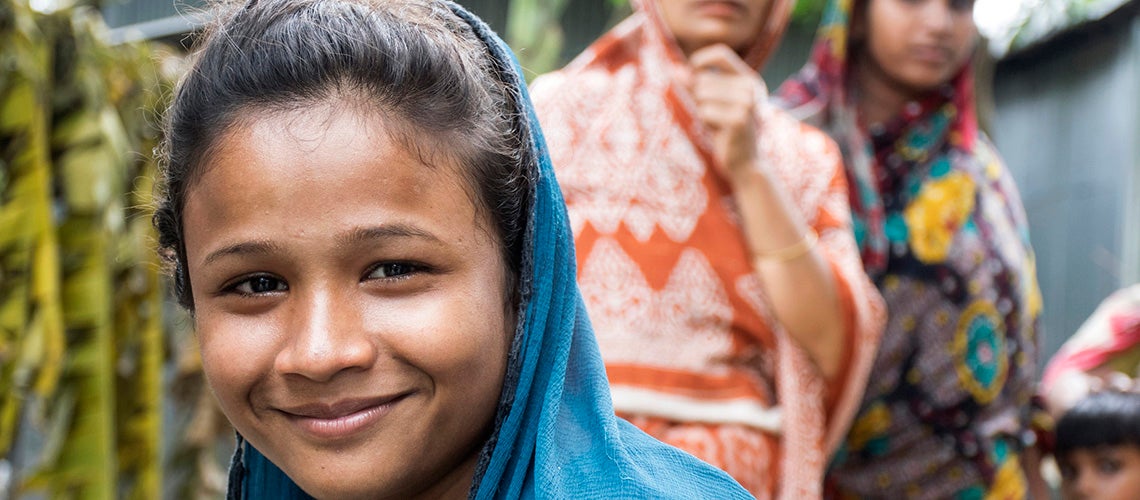 Photo: Rama George-Alleyne / World Bank
Photo: Rama George-Alleyne / World Bank
Since the introduction of the dollar-a-day poverty line in the 1990 World Development Report, the World Bank has used purchasing power parities (PPPs) — exchange rates that account for relative price differences across countries — to derive the international poverty line and estimate global poverty. The international poverty line is set as the typical national poverty line in the world’s poorest countries. PPPs are used to convert national poverty lines as well as the value of households’ income and consumption — the backbones of global poverty measurement — to a common currency across countries.
The international poverty line increases over time primarily because prices tend to increase. As new PPPs have been released, the World Bank has revised the international poverty line from $1 a day in 1985 PPPs to $1.08 with 1993 PPPs, to $1.25 with 2005 PPPs, and to the $1.90 line with 2011 PPPs that is used today.
We are now about to adjust it again.
In fall 2022, the World Bank will switch to using the 2017 PPPs for its global poverty numbers. This follows the 2020 release of a new set of PPPs based on prices collected in 2017 by the International Comparison Program. As a result, the international poverty line will be $2.15. This means that everyone living on less than this amount per day will be considered in extreme poverty.
It is important to note, though, that the real value of the international poverty line is virtually unchanged — it is simply expressed in different prices now.
Maintaining the real value of the international poverty line is vital to keep fixed the goalpost of the first target of the Sustainable Development Goals (SDGs) and the first of the World Bank’s goals — both of which concern the share of the world’s population living below the international poverty line.
Because of substantial changes to poverty when a new PPP round was released in the past, the Commission on Global Poverty led by the late Sir Anthony Atkinson advised the World Bank against updating the international poverty line with new PPPs until 2030 — the target year of the SDGs and the World Bank’s own poverty goal. In its response to the Commission at the time, the World Bank said it would “plan to follow this recommendation but leave open the possibility that future [ICP] rounds might be used again to inform the construction of the [international poverty line], even before 2030, if and only if we are satisfied that the ICP methods have substantially stabilized over at least two ICP rounds.”
Has the stability criterion been met? If stability is viewed at the global or regional level, then the criterion has been met (see this paper for a technical analysis and also for how 2017 poverty numbers would be affected by the new poverty lines). This is also one of the reasons why, at the global level, extreme poverty would remain relatively unaffected by a switch to 2017 PPPs.
There have been, however, some significant changes to the PPPs at the country level, as has been the case with every PPP revision. For certain countries, a switch from the 2011 PPPs to the 2017 PPPs will cause large changes to measured extreme poverty rates due to the adjustments in their estimated purchasing power. Some of the changes at the country level also reflect improvements in the quality of the PPPs. In some countries, for example, the 2017 PPPs are based on price data from many more items than the 2011 PPP round. In other countries, price data were collected for the first time in 2017, meaning that these countries no longer need to rely on imputed PPPs using a regression model. The decision to use the more recent 2017 PPP data is consistent with a practice of using newer and higher-quality data when available.
In addition to the current $1.90 international poverty line, the World Bank tracks two other poverty lines that reflect the typical national poverty lines in lower-middle-income countries ($3.20 per day) and upper-middle-income countries ($5.50). These lines also will be adjusted upward, to $3.65 and $6.85.
Following recommendations by the Commission on Global Poverty, the World Bank is also using two complementary poverty measures: The societal poverty line, which captures how definitions of poverty evolve as countries grow richer, and the multidimensional poverty measure, which captures deprivations that go beyond monetary poverty. As a result of the 2017 PPPs, The Bank’s societal poverty line also will be updated. The multidimensional poverty measure includes the international poverty line as the cut-off in the monetary dimension.
We will continue to use the 2011 PPPs for our primary global poverty numbers until fall 2022. Starting then, the rates based on 2017 PPPs will be the headline numbers when we release the next Poverty and Shared Prosperity Report. We will still make the estimates based on 2011 PPPs available through the Poverty and Inequality Platform. This will allow users to compare the headline numbers with alternative PPPs.
For more information on the stability between the 2011 PPPs and 2017 PPPs, the derivation of the various poverty lines, and the impact of the 2017 PPPS on global poverty, see Jolliffe ⓡ al. (2022) and accompanying blogs on poverty lines and changes in poverty.
Related
- Fact Sheet: An Adjustment to Global Poverty Lines
- Assessing the Impact of the 2017 PPPs on the International Poverty Line and Global Poverty
- How do the 2017 PPPs change our understanding of global and regional poverty?
- Updating the international poverty line with the 2017 PPPs
- International Comparison Program
- Poverty and Inequality Platform




Join the Conversation